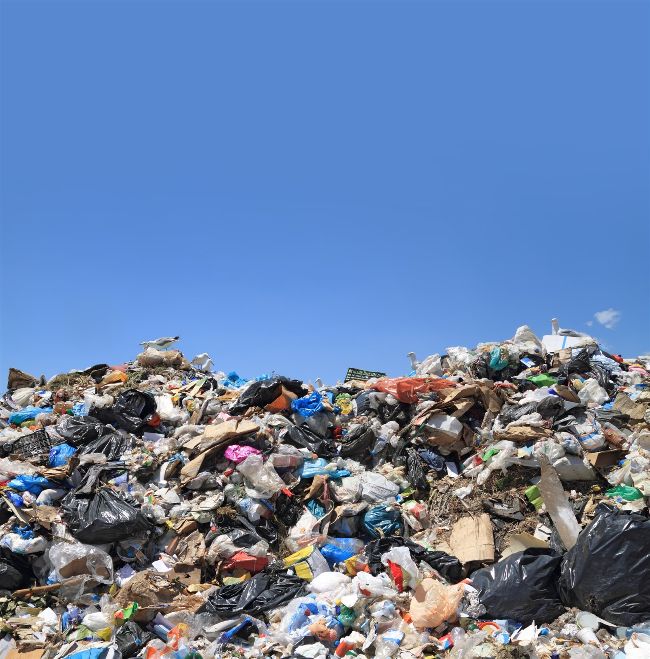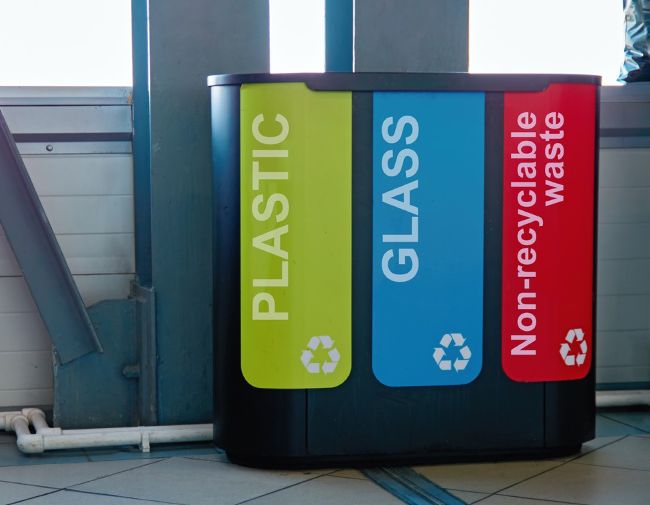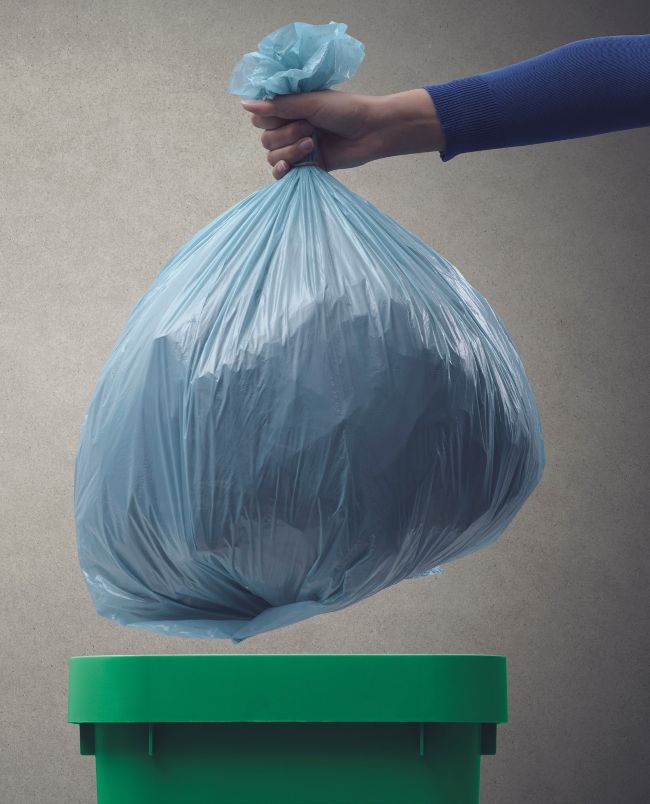FROM WOW TO WASTE IN SECONDS
The beauty & spa industry is an active contributor to the crushing global waste scale, to which 2bn tonnes of municipal solid waste is added every year. Charné le Roux details ways in which salons and spas can make a difference

Image from Shutterstock
We find it difficult to associate the notion of spa, beauty and wellness with waste, pollution and social injustice (caused by poor waste management practices). However, according to the World Bank, a rise in waste will likely escalate to 3.4bn tonnes by 2050. An increase of 70%.
To make matters worse, many beauty and personal care products are classified as hazardous, or toxic waste, including many nail polishes and nail polish removers, hair dyes, hairsprays and also lipsticks made with acrylates (mostly those that have water resisting properties). Hazardous waste is waste with properties that make it dangerous, or potentially harmful to human health or the environment. It has either ignitable, corrosive, reactive or toxic characteristics. Pouring hazardous cosmetics down the drain or mindlessly disposing of it in the garbage bin, can violate waste regulations, pose a threat to employee and environmental health, and seriously compromise your business’s reputation.
"In the
NATUR AL WORLD, ORGANISMS FEED
on
DEAD PLANTS AND ANIMALS,
including
THEIR WASTE,
and
BREAK THEM DOWN,
after which the
NUTRIENTS ARE RECYCLED
so that they can be
USED AGAIN
by living plants and animals.
NATURE’S WASTE DOES
NOT GET WASTED
at all."
How did our waste management reputation end up in trash?
The beauty industry has a particular affinity for packaging and often, the luxury and opulence of the packaging weigh as much in the purchasing decision as the product that it contains. The hospitality, spa and beauty industries are also significant consumers of micro-packaged consumables. Take for example products such as mini shampoos, shower gels and soaps, sugar sachets, baby butter and jam plastic pods etc. These individual items require exceptionally high amounts of raw materials, energy and also water inputs to be individually manufactured and packaged, leaving significant waste and pollution impacts. Additionally, single use items and disposables are signature items in the spa industry, which has come to rely on the convenience of plastic body wraps, disposable underwear, plastic shower caps, single use eye and facial pads, and the like.
"Pouring
HAZARDOUS COSMETICS
down the drain or
MINDLESSLY DISPOSING
of it in the garbage bin, can
VIOLATE WASTE REGULATIONS,
pose a
THREAT TO EMPLOYEE
and
ENVIRONMENTAL HEALTH,
and seriously
COMPROMISE
your
BUSINESS’S
REPUTATION."
There is no AWAY when we throw away what we no longer want
Before we talk about how to manage our waste better, let’s first pause to consider the biological waste cycle, how Nature manages her waste, and concepts such as a Circular Economy and Zero Waste.
In the natural world, organisms feed on dead plants and animals, including their waste, and break them down, after which the nutrients are recycled so that they can be used again by living plants and animals. Nature’s waste does not get wasted at all. It gets reused. This is in stark contrast with Industry’s cycle, where materials follow a one-way stream – from taking to making to wasting. Materials are mined and processed, products are assembled, distributed, used by consumers, and then discarded to landfills, incinerators or simply into waterways. Every aspect of this one-way model has negative environmental and health impacts.
Our growing realisation that we need to adopt a biological waste cycle gave rise to movements such as Circular Economy, Zero Waste and Cradle-to-Cradle design.

Image from Shutterstock
Circular Economy
The Circular Economy philosophy is that waste must be eradicated not just from manufacturing processes, but also throughout the life cycles of products and their components. This means that everything that we create, in all forms and parts, should have purpose.
Zero Waste
The Zero Waste movement advocates that no waste should be sent to landfill. We should reduce what we need, re-use as much as possible, recycle as little as possible and compost the rest. Zero Waste principles have been adopted by most of the world’s green building certification programs, which now allow specifically for Net Zero Waste certification. Sun International’s Wild Coast Sun was the first resort in Africa to receive a Green Star Net Zero Waste rating. The resort reduced 40 tons of waste to landfill per month to zero. One of its successes included a dedicated effort to separate recyclable materials and contaminants from organic waste. Instead of having access to compactors and wheelie bins, which promote anonymous waste dumping, special bags were used to separate out 70% of all waste on the hotel site. This allowed for convenient transport of whatever could not be re-used by the hotel complex.
Cradle-to-Cradle
Cradle-to-Cradle design principles involve cyclical material flows that, like Nature’s cycle, eliminate the concept of waste but as early as the design phase. Each material in a product is designed to be safe and effective, and to provide high quality resources for subsequent generations. Many diverse industries, from chemicals to cars and software to business services, have begun investment in Cradle-to-Cradle waste management initiatives. The initial focus was placed on product categories such as detergents, car tires and shoes, which break down and rot through use, in order to test future capabilities for composting. As a consequence, Nike developed glue-less sneakers based on dismantlable modular architecture allowing for worn out parts to be replaced independently from the rest of the shoe. Electronic goods were considered as well, from a different perspective, namely for their potential to be broken down into ‘technical nutrients’. Pioneers in the beauty and personal care industries also started to set new benchmarks around this important principle and created compostable packaging, dry/powdered cosmetics (which require less packaging) and refilling options.

Image from Shutterstock
"SEPARATE YOUR WASTE AT SOURCE,
or where it is
GENER ATED.
Doing this afterwards is
TIME CONSUMING
and potentially
UNSAFE,
especially when you
GET INTO CONTACT
with
HAZARDOUS WASTE."
Going forward
The old adage of reduce, re-use, repair and recycle still provides, in order of importance, the best overall guidelines to follow in managing waste.
These principles apply from the moment you contemplate a purchase, through the product’s commercial lifespan and up to the point when it no longer holds any economic value to your business.
Best practice dictates that we start with an engagement process involving all stakeholders. Of course, spas and salons themselves do not manufacture the packaging that is now under the spotlight. A critical part of your waste management plan is therefor to engage with your suppliers and reach an understanding with them to reduce packaging for all your retail products and guest amenities. In fact, consider making suppliers responsible for the removal of their own packaging. Also, do not underestimate the role of your spa team. Engage them too and spark an innovation drive for ideas around waste reduction.
Questions that we can ask our suppliers in adopting a sustainable procurement strategy aimed at ethical waste management include:
• Is the product made with sustainable materials?
These include organic cotton, FSC certified timber, glass or metal. Such materials have longer life spans, can be recycled indefinitely and do not pollute if they end up in landfill.
• Is the product made with interchangeable parts?
Take your brushes for example, having a single brush handle with multiple interchangeable brush heads would save both on resource consumption and waste.
• What happens to the product at the end of its life?
Is it compostable or recyclable? Be careful about a claim of biodegradability, because, in many cases, especially when it comes to biodegradable plastic, a special industrial process is required for the plastic to break down. Unless this special treatment process is followed strictly, the biodegradable plastic will simply end up in landfill and, as with normal plastic waste, will take years to decompose in addition to leaching toxins into the soil.
Separate your waste at source, or where it is generated. Doing this afterwards is time consuming and potentially unsafe, especially when you get into contact with hazardous waste. It is also expensive if you have to rely on your waste partner to do it for you.
Going paperless is probably one of the most rewarding greening processes, because apart from the reduction in paper use and forestry depletion, it also contributes to your technological efficiency and business intelligence goals, as well as guest convenience. Digitising also reduces the significant expense around luxury printed treatment menus, price lists and consultation cards and improves the bottom line. So no more sorting, printing, recycling, mailing and filing papers.
As said by Pete Seeger, a folk singer and social activist:
“If it can’t be reduced, reused, repaired, rebuilt, refurbished, refinished, resold, recycled, or composted, then it should be restricted, designed or removed from production.”
As turnkey sustainability practitioner, Charné le Roux advocates and influences sustainability in the wellness industry. Her work includes creating the Sustainable Spa Practitioner Course, GreenSpa Guide and GreenSpa Calculator. Email charne@greenspa.africa